Cape Verde Islands – General Information for Yotties
They say it's not safe...Cruising notes given in good faith, but not to be taken as gospel.
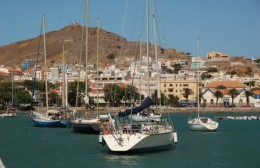
For yachtsmen sailing to Brazil or to the West Indies, the Cape Verde islands lie only a biscuit’s toss from the proper route across the North Atlantic. Like the Canaries, the Cape Verde archipelago makes an ideal stepping stone for the seafarer – and yet remarkably few yachts put in here. Those that do stop tend to go only to Mindelo (Sao Vicente) or to Palmeira (Sal). It is true that the number of visitors has increased radically over the past fifteen years, but most people still give the place a miss and this is largely because of the press that it is given.
A Filthy Reputation
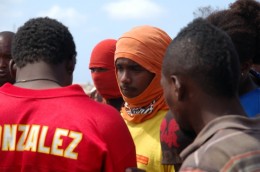
The Cape Verde islands are reputed to be dirty, and the weather is said to be dangerous with a high incidence of gales and even hurricanes. Thefts from yachts are numerous, we are told, and you have to pay someone to guard your dinghy when you go ashore.
If you take on water here then you will probably end up with giardia or even cholera; and if you don’t die of that then the dengue fever will get you – or so they say.
All in all, if your only source of information is the cruising grapevine then you certainly won’t want to pay a visit to the Republic of Cape Verde!
In Our Experience
Our first visit to the islands was made 21 years ago, and it was made in spite of those rumours. We only had time to visit two of the islands – the two with the worst reputation, as it happens – and yet we still came away having formed a very favourable impression of the place. Four years later we went back, with our small son and our baby daughter, and this time we stayed for over a year and visited every island and almost every conceivable anchorage.
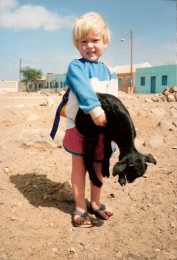
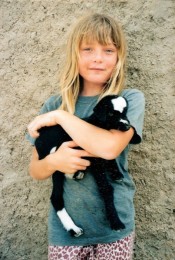
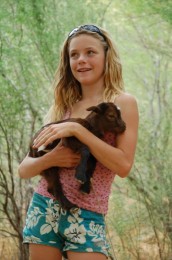
After that we didn’t put into Cabo Verde for ten years, and when, finally, we did return we were shocked at the changes that had taken place. 17 years ago we had the islands to ourselves, but when we returned we found that they had been discovered – by the mafia…! There were Italian hotels popping up on our favourite beach – a beach which we once shared only with the turtles – and one of the villages on another island had changed and expanded so much that it was totally beyond recognition.
In 2010 we went again – we decided that the second-rate version of Cabo Verde was still a darn sight closer to our idea of perfection than a great many other places – and in February of 2011 we came back for a fifth time.
As you will have gathered, we rather like the Cape Verdes. However, we can’t deny that the place does have its cons as well as its pros, so let’s deal with those aforementioned allegations one by one:
“The weather is dangerous”
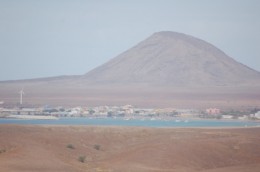
Look, I’m not going to tell you that the weather here is never ever dangerous… but I will say that the Cape Verdes are about the least dangerous place that I can think of, weatherwise.
For more information, about the incidence of gales, hurricanes, and fog, take a look at our next article…
“The people are a bunch of crooks”
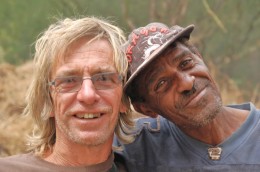
The majority of the Cape Verdean people are friendly, helpful, and entirely trustworthy, and a significant number are simply wonderful. We love them!
Unfortunately, the generous, warm-hearted attitude of the majority cannot alter the fact that there are a few bad guys: drug addicts and others who will take what isn’t theirs, given half a chance. Security is not a major problem – not yet – but yotties should certainly lock their boats whenever they go ashore. Distancing yourself from the boat-boys in Palmeira might also be a good idea – although some of them are entirely trustworthy one or two are not – and at the time of writing we recommend that Praia be given a wide berth.
“The water is not fit to drink”
So far as we are concerned, pretty much anything that is good enough for the locals is good enough for us – except the water. Water-borne disease is one of the biggest killers in the world, and so you have to take the issue very seriously.
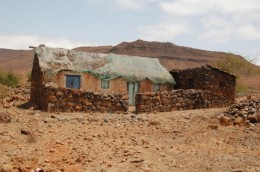
As a general rule yotties try to catch their own drinking water, but this doesn’t work in the Cape Verdes. You could spend the whole year here and not see a drop of rain. When we first arrived in the islands we vowed only ever to take on water which had come from a desalination plant; and at that time (1989/90 and 1994/5) this meant only taking on water in Sal and Mindelo.
Then we arrived in Praia, hung around for a while… and before long the tanks were almost empty. Getting water was going to be easy enough here – we just needed to talk to one of the tanker drivers, fix a time, and bring the boat alongside in the fishing port – whereas taking on water in the next island along might be very much harder. The only problem was that the water in Praia came from a bore hole.
“Well, everybody else gets their water from the bore-hole, so it can’t be that bad!” we told each other.
We did the deed: a ton of water was duly deposited into our tanks (and onto our decks…). And two weeks later there was a cholera epidemic which killed 24 people.
Happily we escaped, but not entirely unscathed: I contracted giardia.
Praia does now have a desalination plant; so the chances of contracting something nasty are greatly reduced.
In Palmeira (Sal) you can either hire a tanker, in the manner previously described, or else you can take your jerrycans ashore and queue at the village standpipe. This can be quite fun – but if it’s not to your taste you can pay one of the boat-boys to do the work.
In Mindelo you can hire a tanker again – this is always the cheapest option, incidentally – or you can pay twice as much and take on water in the marina or in the fishing port (in the south-eastern corner of the bay of Porto Grande). The quality of the water in the marina varies according to how long it has been sitting in the tank – when we tried it, it was absolutely disgusting – and many yachts prefer to use the fishermen’s supply. Seemingly, the fishermen have a faster turn over!
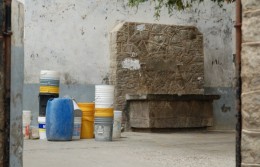
In Brava you can take your jerrycans ashore and get water at the standpipe, but this is not desalinated water; it’s good old-fashioned spring water which spouts from the mountainside, somewhere inland. It tastes earthy.
For all I know it will give you liver-fluke or poison your kidneys…………..
“There’s a dengue epidemic”
Ancient history. In all the years that we have been coming to the Cape Verdes we have never seen a mosquito here, but it is true that in the autumn and early winter of 2009 there was a dengue epidemic here. It was the first instance of the disease ever having been noted in the islands.
Thousands of people contracted dengue, mostly in the islands of Fogo, Maio, and Santiago – especially Santiago, and especially in the city of Praia – and six or eight of them died.
So far as I am aware there have been no new cases since September 2009.
Dengue fever is not usually a killer but it is very, very nasty – or so I’m told by various friends who have had it. It is certainly something to avoid… but if you are afraid to visit the Cape Verdes for fear that there might be another outbreak then you should also avoid Senegal, the Gambia, Brazil, Guyana, Trinidad, Carriacou… and many of the other Caribbean islands where this disease is endemic.
“It’s dirty”
Yes, it is dirty here; very dirty. There is no disputing that.
Spend a week in the Cape Verdes in the harmattan season – between December and April – and your boat will be covered in a fine orange-brown dust. It will form a layer on the windward side of every piece of standing rigging and all over your sheets; both your jib sheets and, if you are so rash as to hang them out to dry, your bed-sheets too.
(The locals don’t tend to hang up their washing. They find that it stays cleaner if they spread it to dry on the dusty, dirty ground…)
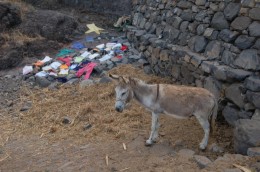
When you go to sea then the dust covering your boat will become a slime coating every wet surface, and unless you have gone aloft and washed each stay from top to bottom it will also stain your sails.
Likewise, if you spend the day ashore your T-shirt will gradually take on a pinkish tinge and you will return with your hair matted. When you wash it, the water will run brown.
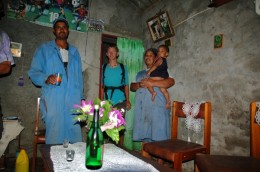
If you make friends with the peasant farmers who live in the villages in the mountains, or with the fishermen in the smaller ports – and if you are so fortunate as to be invited into their homes – then you will find that the people live in varying degrees of squalor. The house will usually consist of just two rooms and they will be ill-lit, with grimey walls and a filthy concrete floor.
There are exceptions – we have visited peasant houses which were as clean as the average Western home or as clean as the new homes belonging to the well-to-do city dwellers (whose houses have tiled floors, glass in the windows, hoovers tucked away in a cupboard, and no soul…) – but how these few peasant cottages came to be so neat and tidy is beyond me.
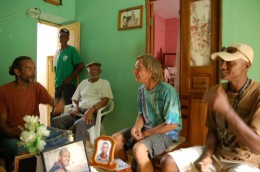
How can anyone be expected to keep their home clean when the ground outside is dirty and the wind whistling in through the open window is laden with dust? I reckon those house-proud women with the well-kept homes must spend all day sweeping and washing.
Don’t bring your immaculate new Halberg Rassey to Cape Verde; and don’t wear your whites. This place is for cruising bums in kit bought from Oxfam.
For more information about the Cape Verde islands, take a look at our other recent articles about the archipelago:
- General info:
- Sal
- São Vicente
- Boa Vista
